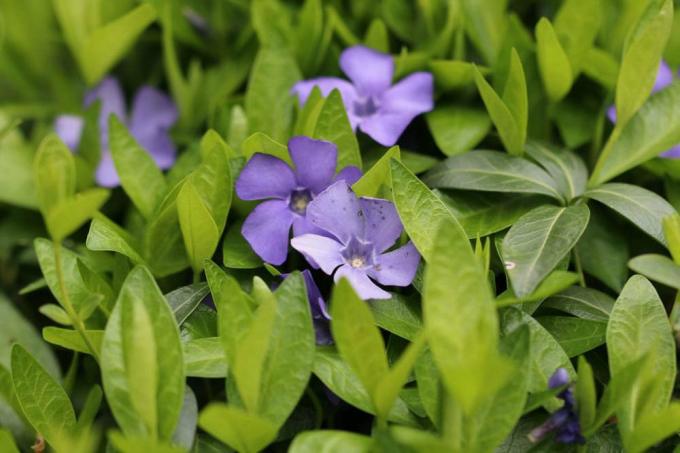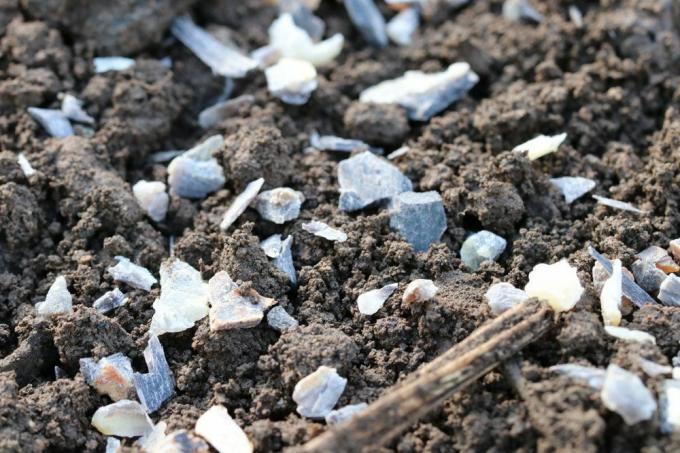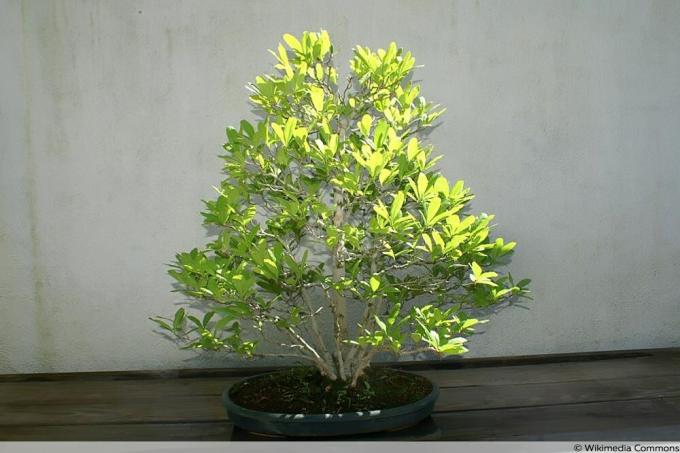
table of contents
- Location
- floor
- plants
- Plant neighbors
- Care instructions
- to water
- Fertilize
- Cut
- Overwinter
- Multiply
- Cuttings
- Sinker
- Mossing
- Diseases and pests
Profile and care information open +conclude -
- Flower color
- White
- Location
- Partial shade, shady, sunny
- Heyday
- March April May
- Growth habit
- upright, expansive
- height
- up to 24 meters high, in our widths up to max. 10 meters
- Soil type
- sandy, loamy
- Soil moisture
- moderately moist, very moist, fresh
- PH value
- neutral, weakly alkaline, weakly acidic
- Limescale tolerance
- Calcium intolerant
- humus
- rich in humus
- Poisonous
- Yes
- Plant families
- Magnolia family, Magnoliaceae
- Plant species
- Flowering trees, container plants, ornamental trees
- Garden style
- Roof garden, Japanese garden, park, pot garden
Like its relatives, the tree magnolia impresses with its impressive flowers in spring. However, it takes patience for the tree magnolia to show its full bloom. The tree magnolia is easy to care for if it has been given the right location. Because in terms of location, the Kobushi magnolia is a real diva. The tree magnolia tolerates the German winter well; frost protection is only required for young plants. It also doesn't need any special care in winter.
Location
The tree magnolia is preferred
- warmth
- sunny to partially shaded
Locations at the edge of the forest. Since tree magnolias can get very wide, you should plan at least four square meters for a tree. You should also note that late frosts can bring the blossoms to an abrupt end within a few days. Therefore, the site should be protected from cold easterly winds. Space in front of a house wall or in the corner of a building is ideal against late frosts.

Source: Koichi Oda, Magnolia kobus - Flickr - odako1 (1), Edited by Gartenlexikon.de (MKr), CC BY-SA 2.0
Tip: The Kobushi magnolia needs at least four hours of sunshine a day.
floor
The tree magnolia can be grown on almost any soil. However, it thrives particularly well on soils with the following properties:
- sandy and loamy
- pH value in the slightly acidic to slightly alkaline range
- evenly moist
- rich in humus
The Kobushi magnolia does not like clay or compacted soils. In this case, you'd better refrain from planting the tree.
plants
The best time to plant Magnolia kobus is spring. Since the flesh roots of the plant are very delicate, you should be very careful when planting. Follow the instructions below:
Dig the planting hole
- Size: generously dimensioned, roots must not touch (at least three times as large as the ball of the pot)
- do not plant too deep: the roots of the pot are flush with the surface of the soil
- fill up carefully
- Press the earth lightly with your hands
- do not start (risk of root breakage)
- carefully sludge
Tip: Create a watering rim so that the moisture is more easily transported to the roots.
Plant neighbors

The Kobushi magnolia comes into its own as a solitaire. However, underplanting is recommended to protect the roots. Among the winter and spring bloomers, the following plants go well with Magnolia kobus:
- Märzenbecher (Leucojum vernum)
- Hyacinths (muscari)
- Bluestar (Scilla)
- Winterling (Eranthis)
The following are suitable as ground cover for underplanting, for example:
- Foam blossom (Tiarella)
- Little evergreen (Vinca minor)
Care instructions
Tree magnolias are easy to care for. However, you can be sensitive to the growth of competition. That is why you should cover the soil with a layer of bark mulch. If weeds need to be removed, extreme care should be taken to avoid damaging the shallow roots of Magnolia kobus.
to water
The easy-care tree magnolia is considered to be sensitive to drought. However, according to recent observations, it should also tolerate drought very well. Nevertheless, you should pamper the tree magnolia with additional watering in very dry periods.
Fertilize

In spring, Magnolia kobus is grateful for the gift of a complete organic fertilizer or horn shavings. If the ground has been covered with a layer of mulch made of leaves or grass clippings, the tree magnolia does not need any additional fertilizers in spring. In autumn, the tree magnolia is happy about a complex fertilizer or good garden compost, because these fertilizers strengthen the plant for the coming winter.
Tip: Organic material does not have to be incorporated, as the tree magnolia belongs to the shallow roots.
Cut
The tree magnolia does not need regular pruning. Shortening the branches can even lead to their picturesque growth being lost. Therefore, you should only remove sick and dead branches. Furthermore, a cut is allowed if the tree has been badly damaged by a storm. The ideal time for all pruning measures is after flowering.
Overwinter
Magnolia kobus is a hardy plant. However, you should protect young plants from the cold in winter for the first two to three years of their location. For a wind barrier:
- Put sticks in the ground around the young plant
- Angle a winter protection fleece around the sticks
This procedure is no longer necessary for older plants. They tolerate temperatures down to minus 34.5 degrees Celsius. This corresponds to the winter hardiness zone (WHZ) 4. Since the frost hardiness is higher on sandy soils, you should improve moist, nutrient-rich clay soils with sand and deciduous humus.
Multiply

Source: Photo by David J. Rod, Magnolia kobus 5zz, Edited by Gartenlexikon.de (MKr), CC BY-SA 4.0
Propagating the Kobushi magnolia is relatively easy, but you have to wait several years for the first flowers. In addition, propagation methods such as cuttings or sinkers require a lot of patience.
Cuttings
Since the Kobushi magnolia belongs to the deciduous magnolias, the cuttings are taken in early summer after flowering. For successful propagation in this way, simply follow the instructions below:
- Cut off the tip of the shoot to a length of 10 to 15 centimeters
- only use tips of healthy, strong, slightly woody shoots
- remove the lower pair of leaves
- Use a sharp knife to scrape off the bark at the bottom
- Put the cutting in moist potting soil
- cover with a clear plastic bag
- Location: partially shaded, no midday sun
- Care: always keep moist
- Remove the plastic cover after the first roots have formed
After another four weeks you can plant the young tree magnolia in a pot with humus soil. The young plant is only planted in the coming spring, as it should be overwintered frost-free for the first winter.
Sinker
The prerequisite for the technique is that you can pull a branch that is not too lignified to the ground. After you've selected a branch, just follow the instructions below:
- Loosen the soil
- enrich with compost
- Make a 15 to 20 centimeter deep furrow with the spade
- Defoliate the lower leaves, remove the flowers
- Slightly score two to three places with a sharp knife or razor blade
- Pull the sinker into the furrow
- cover with earth
- weight down with stones
- Do not cover the tip of the shoot with soil
- pour on
If the sinker has developed its own roots after a few months, you can separate it from the mother tree with a smooth cut. Then it can be planted at the selected location. This is either in late autumn or in the coming spring.
Mossing
For mossing, choose a two-year, unbranched shoot. If you have cut off the shoot, then proceed according to the following instructions:
- Carefully cut the bark two centimeters apart
- Carefully peel off the bark, taking care not to damage the underlying tissue
- Cover the peeled shoot with moss
- Place the cuff from a cut open plastic pot around the moss
- Cover the pot with a transparent plastic wrap and close tightly
- Always keep moss moist
- Carefully expose the shoot in autumn
- Cut off the branch below the young roots
- Plant the young plant immediately in a pot with humus soil
- Use a pot with a drain hole
- pour on
- Shorten above-ground shoots by two thirds
Then care for the young tree magnolia in a light, frost-free location like an adult plant. The young plant can be planted out in the garden next May.
Diseases and pests

Source: Bruce Marlin, Magnolia kobus borealis, Edited by Gartenlexikon.de (MKr), CC BY-SA 3.0
Leaf spot disease
You can recognize an infection with the bacterium Pseudomonas syringae by black spots on the leaves. It occurs mainly in damp, cold weather. Since the infected shoots can die off completely, you should prune diseased shoots back into the healthy wood at an early stage. In addition, you should regularly dispose of fallen leaves with household waste, as the bacteria in the leaves overwinter.
mildew
If powdery mildew or downy mildew has attacked the tree magnolia, you should remove the diseased shoots and branches so that the fungus cannot spread any further.
Caterpillars
Some caterpillars find the leaves of Magnolia kobus extremely tasty. However, since new leaves form immediately after being eaten, the tree should withstand this plague without any countermeasures.
Whitefly
The real enemy of the tree magnolia are the larvae of the whitefly, because they feed on the leaf juices and can cause lasting damage to the tree. The eggs are laid on the underside of the leaf. A natural enemy of the whitefly are parasitic wasps, which you can buy in specialist shops.



